Whole-House Surge Protector: 3 Signs You Need One
Fire departments nationwide responded to over 46,000 fires from 2015 to 2019. The fires caused over a thousand civilian injuries and approximately 1.5 billion in damage.
All of these fires and the resulting damage came from home electric complications. Each of these houses had some malfunction with its wiring or other electrical malfunction.
Whole-House surge protectors offer home protection and safety. They can serve as effective fire prevention. But what is a whole-house surge protector, and do you need one?
Electric issues are serious, and there may be signs your home isn’t safe as you think. Let’s dive into what whole-house surge protectors are and the three signs you need one.
What is a Whole-House Surge Protector?
Let’s start small; you’re probably aware of surge protectors. If not, they’re small devices that allow you to plug in many electrical devices. But their primary function is to protect your items from electrical spikes or “surges.”
A whole-house surge protector is a scaled-up version of its smaller counterpart. These get hard-wired into your home’s electrical system to keep the entire structure safe from voltage spikes and surging.
Grounding and Why it Matters
Grounding is the key to successful home protection. Surge protectors don’t work correctly without grounding. Grounding is when extra electricity safely routes from an electrical device to the ground.
Electrical grounding is an emergency measure. The only time it’s necessary is if there is a fault in your wiring. Electricity is a complex matter, but here is a simple explanation of how grounding works.
Excess electrical energy wants to go back to the ground. Specifically, electrons want to remove negative energy and balance themselves or “return to equilibrium.”
If your grounding works, wires in your electrical system will send the current into the earth. When your grounding doesn’t perform correctly, things can get dangerous.
Damage to these wires may cause the current to travel through other nearby materials. Electricity takes the path of least resistance. This causes it to move through metal pipes or flammable items, like wood.
This “lazy” path to the ground is a short circuit. That’s when electricity travels outside the designated wires to reach the ground.
Your Home Grounding System
Your grounding system is a series of bare copper wires that connect to every electrical box in your house. All cables meet inside the grounding bar inside your service box. The bar connects to a grounding rod buried in the earth.
Technicians designed this system as the path of least resistance for electricity in case of “overflow.” One way to tell if you have a grounding system is your outlets.
The third rounded slot near the bottom indicates whether your residence is adequately grounded. When you plug grounded appliances into these outlets, they connect to the home’s grounding system.
However, not all residences have grounding systems. Older homes built before 1965 may contain metal wiring or completely lack grounding. You can contact an electrician if you’re unsure about your grounding system.
3 Signs You Need a Whole-House Surge Protector
Home electric problems often have apparent signs. But it’s common for people to ignore them until it’s too late. We’ve assembled a small index of three signs that you’ll need a whole-house surge protector.
You Have Flickering Lights
Dimming and flickering lights are more than a mild inconvenience. You should seriously consider a whole-house surge protector if there’s flickering when large appliances power on.
Dimming is symptomatic of damage inside your electrical system. The damage happens because your house’s powerlines can't meet your demands.
There Are Charred or Discolored Outlets
One primary reason to install a whole-house surge protector is to prevent fires. Blackened and charred outlets could signal you’ve suffered a power surge.
In hazardous instances, electrical surging sometimes causes sparks that spread to flammable surfaces. Carpets, paper, your walls, and any other ignitable object may become a raging house fire.
Installing a surge protector can be the first line of defense to prevent fires. Call an electrician once you spot discolored outlets. You need an inspection to check your wiring.
Your Circuit Breakers Trip Often
Sometimes, devices can be too powerful for your electrical system. One way to tell if this is the case is if a circuit trips or if there’s a blown fuse after it’s plugged in.
Circuits breaking for no reason may show you have various small power surges throughout your electrical system. However, an old fuse box or circuit breaker could be the culprit.
Voltage Protection Rating
Whole-house surge protectors come with voltage protection ratings or VPRs. VPR is the upper limit that the surge protector will let inside your residential electrical system during a spike.
You may see the VPR listed as “clamping voltage.” Clamping voltage refers to the limit on which your surge protector will “clamp” down and stop excess electricity.
Some surge protectors come with listings called the “suppressed voltage rating” or SVR. SVR is an older way of measuring how much power the unit will let through. Newer surge protectors use VPR measurements instead.
The lower your whole-house surge protector’s VPR, the better the device works.
Invest in Home Protection Today
Consider a whole-house surge protector if you’re suffering from home electric issues. Electrical fires cause enormous damage, and you should consider protecting against them. Fire prevention is worth the investment.
Flickering lights, charred outlets, and regular circuit tripping are signs you shouldn’t ignore. It could lead to a fire or severe electrical damage.
Regardless of the potential threat, don’t hesitate to contact New London Electric for service today. We offer over two decades of electrical expertise and professional, licensed aid for residential and commercial buildings.

